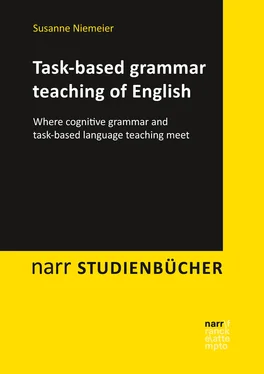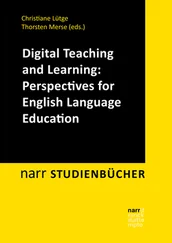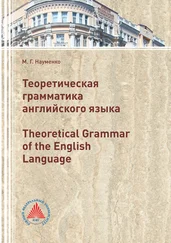So far, tasked-based language teaching and cognitive grammar have not frequently been brought together. TYLER (2012) has presented some suggestions, but has not delved deeply into the topic. CADIERNO/ROBINSON (2009) have used pedagogic tasks to teach the construal of motion events and JACOBSEN (2016) has conducted an experiment on the task-based teaching of the English conditional from a cognitive grammar perspective, the results of which show that the cognitively based way of teaching was more successful than the task-based approach on its own and that both of these ways of teaching worked better than traditional methods. The connection between task-based teaching and cognitive grammar definitely seems to be a fruitful one, although this can only be claimed with caution, as there is still a lack of studies.
This book intends to show that a connection of task-based teaching and cognitive grammar is indeed a very fruitful one, as the two approaches can be integrated in order to yield the approach of task-based grammar teaching (TBGT). The book consists of two main parts, a more theoretical one and a more practical one, and is structured as follows. The first part discusses the didactic as well as the linguistic theoretical background, starting with some general reflections on the role of grammar teaching in various didactic approaches and pointing out the necessity of grammar instruction. Chapter 2 summarises the development of task-based language teaching, discusses its advantages and disadvantages as well as various unresolved questions that researchers do not all agree upon, such as the role of grammar in this approach. It furthermore outlines general ways of implementing the approach into the foreign language classroom, focusing mainly on WILLIS’ task cycle. Chapter 3 offers a concise introduction to cognitive grammar and its applications and additionally outlines their potential for the foreign language classroom. Chapter 4 then brings the two approaches of task-based language teaching and applied cognitive grammar together and explains how one can profit from the other.
Subsequently, the second part of this book translates the rather theoretical perspectives of the first part into actual teaching practice. It discusses ten case studies on diverse grammatical phenomena, which were chosen according to their relevance for the foreign language classroom, starting out with the TAM complex that every verb entails (tense, aspect, modality – treated separately due to ease of explanation although they actually belong together), continuing with conditional clauses and the passive voice, tackling prepositions and phrasal verbs, and finally focusing on verb complementation in complex sentences as well as on pronoun usage and article usage. The book does not intend to provide model lessons or teaching recipes but instead uses one teaching example in each of the chapters to explain in detail how the grammatical phenomenon in question can be implemented in a task-based way into a communicative situation. Further possible communicative situations and tasks are briefly indicated after the explanations of the teaching examples. Most grammar topics are discussed with a secondary school audience in mind. Those topics which are also suitable for a primary school audience (or for (pseudo-) beginners in secondary school who do not have a solid foundation from their primary school English years), such as prepositions, pronouns and articles, are discussed for an audience of less advanced learners but can also be used with more advanced learners in order to help them reorganise their grammar skills.
The references following each chapter list the publications which are quoted in the chapters and which can be consulted for more in-depth information. In some instances, further basic texts have been added.
ACHARD, Michel/NIEMEIER, Susanne (2004): “Cognitive linguistics, language acquisition and pedagogy”. In: ACHARD, Michel/NIEMEIER, Susanne (eds.): Cognitive linguistics, second language acquisition, and foreign language teaching . Berlin: Mouton de Gruyter, 1–12.
ALLWRIGHT, Dick/HANKS, Judith (2009): The developing language learner: An introduction to exploratory practice . Houndsmills: Palgrave Macmillan.
CADIERNO, Teresa/ROBINSON, Peter (2009): “Language typology, task complexity and the development of L2 lexicalization patterns for describing motion events”. Annual Review of Cognitive Linguistics 6, 245–277.
CELCE-MURCIA, Marianne (2001): Teaching English as a second or foreign language . Boston: Heinle & Heinle.
JACOBSEN, Natalia D. (2016): “The best of both worlds: Combining cognitive linguistics and pedagogic tasks to teach English conditionals”. Applied Linguistics , https://doi.org/10.1093/applin/amw030.
PENNINGTON, Martha C. (1995): “A situated process view of grammar”. In: PENNINGTON, Martha C. (ed.): New ways in teaching grammar. Alexandria, VA: TESOL Inc., i-xvi.
TYLER, Andrea (2012): Cognitive linguistics and second language learning: Theoretical basics and experimental evidence . London: Routledge.
WILLIS, Jane (1996): A framework for task-based learning . Harlow: Longman.
PART I: Didactic and linguistic theory
This part of the book starts off from a didactic perspective on grammar teaching, elaborating its role in various approaches and methodologies and then concentrates on the approach of task-based teaching, especially focusing on its development, the definition of the concept “task”, on a suitable methodological framework for an implementation of this approach, and on the role of grammar in this approach. Subsequently, the discussion turns towards the linguistic theory, which is based upon the research area of cognitive grammar. The cognitive-linguistic paradigm and its major tenets and beliefs are introduced before the more specialised area of cognitive grammar is explained in detail. The connection between cognitive grammar and foreign language teaching is scrutinised and, in a final chapter, the didactic and the linguistic theories are brought together.
1. Grammar in the foreign language classroom
This chapter starts with some brief comments on the current situation of grammar teaching in English classrooms in Germany, in the majority of which the PPP method (presentation – practice – production) is used, before describing the role that has been devoted to grammar in different language teaching approaches over the ages, starting with the Grammar-Translation Method, continuing with the Audiolingual Approach, ending with the communicative approaches, including the relatively recent focus-on-form movement, and leading up to task-based language learning.
In most German foreign language classrooms, the so-called PPP (presentation – practice – production) approach is currently chosen when it comes to grammar teaching. In this approach, a new grammatical feature is first presented to the learners, normally via the coursebook, which usually contains one or more didacticised texts with an inauthentically high number of occurrences of the phenomenon in question. In a second step, the teacher then explains this phenomenon deductively or lets the learners discover it inductively. This is followed by an analysis of the form and use of the new structure, and finally rules (and sometimes signal words) are formulated, which have to be written down by the learners and learnt by heart. The third step focuses on the learners’ controlled production and use of the targeted phenomenon, frequently in exercises consisting of isolated sentences. However, the meaningfulness of the new grammatical structure is hardly ever touched upon and the PPP procedure does not necessarily enable the learners to use the grammatical phenomenon in naturally occurring conversation outside of the classroom.
Читать дальше












